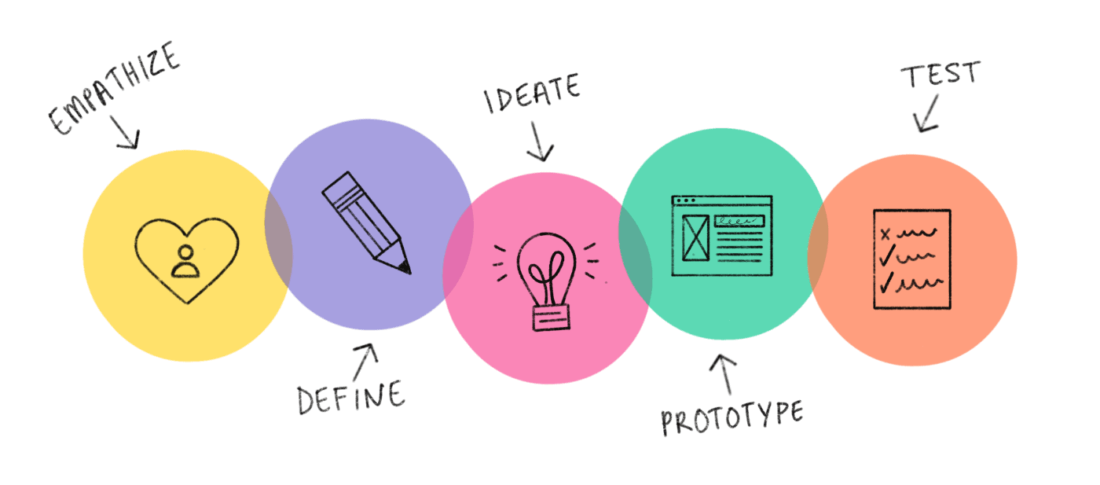
In market research, there are different “vocabularies” amongst researchers, and this can lead to a lot of confusion — particularly when practitioners are effectively doing the same thing — yet unable to collaborate — because they think they’re doing something different.
So to set the record straight, and to inspire more collaboration and cross-pollination of ideas, we’d like to focus on one area, in particular, that is not shared enough (because of semantics) amongst researchers. And that topic is Design Thinking.
Traditional qualitative researchers, UX researchers, and ethnographic researchers are often doing some version of “design thinking,” yet they may not be borrowing from the rich trove or resources developed by design thinkers, simply because the vocabulary is so different. Similarly, those who were trained strictly in the Design Thinking discipline may not be opening their research toolbox wide enough to methods used and discussed more commonly among qualitative research consultants — again, because the vocabulary is so different.
And that’s a shame. Because we have a lot we can all learn from each other.
First, what is “design thinking” and where did it originate?
Design Thinking was commercialized out of IDEO and the Stanford d.school (D is for Design), after being developed, studied, and used (often with different vocabulary) in disciplines including architecture, product design, anthropology, and psychology. It became widely disseminated from the process that IDEO and the d.school developed, and it’s now commonly used among UX and product researchers.
Design Thinking is a process of design (products, software, experiences) that involves 5 basic steps:
1. Empathize: Conduct qualitative interviews, uncover emotions, seek stories
2. Define: Identify meaningful insights, surprises, and tensions, and reframe and create human-centric problem statements.
3. Ideate: Brainstorm new ideas, build on ideas, and allow free-flowing ideas to come out, sans judgment
4. Prototype: Create experiences and designs through rough prototypes that can be tried out, experimented with, and used to test the ideas with the framework from the initial steps in mind.
5. Test: Qualitatively and quantitatively test with customers and prospects. Continue to listen, build empathy, and ideate. Repeat any of the above steps as the design continues to take shape.
That’s it in a nutshell: A 5-step process that starts with customers/target consumers and ends with testing again (preferably qualitatively for more rich feedback). The beauty of design thinking is that it gets the whole team involved in the customer mindset: the empathy-building phase highlights real stories, actions, and use-cases that the engineering, design, and product teams can use to then take into their prototyping phase.
So the core of Design Thinking is qualitative research?
If you’re a traditional in-house or qualitative research consultant and you’re reading this, you may be thinking so this is just qualitative research, re-packaged, with different vocabulary?
And the answer is “yes.”
The core of Design Thinking is the principle that by using “human centered research” (a.k.a. qualitative research), products and experiences can be developed more richly and offer more immersive experiences with an impact that is greater than designs that don’t take the process into account.
Which, of course, qualitative researchers have known all along.
Isn’t it time to merge our thinking and vocabulary more?
If you work in qualitative research and you haven’t specifically called out or spelled out Design Thinking in your process with your clients/in-house teams, it’s worth incorporating. The vocabulary is different, but the likelihood is that if you’ve been doing qualitative research, you’re already going through the same steps with your team.
And for those of you who are Design Thinkers — and strictly in that school — it can also behoove you to expand your vocabulary and practices and borrow from techniques widely shared by traditional qualitative researchers. In the steps 1 and 5 phases, in particular, qual researchers have developed rich methodologies and resources to gain empathy, understand customer needs, and objectively assess results.
Isn’t it better when we can all learn from each other, instead of hiding behind vocabulary and strict “processes” that are actually all trying to accomplish the same thing?
Interested in applying Design Thinking principles to your next research project? Request a proposal today >
